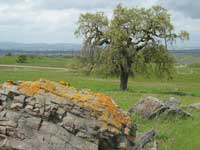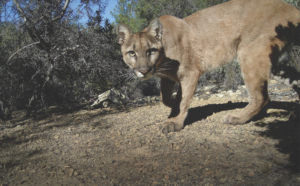It’s rare for a Bay Area city to be in the position of deciding what to do with a windfall of thousands of acres of open space within existing city limits. Yet that is precisely the challenge—and the opportunity—that the City of Concord faces in coming up with a plan for the Concord Naval Weapons Station.
- Photo by Brian W. Holt.
In 2005, the Base Realignment and Closure Commission approved closure of 5,170 acres, the upland portion of the property referred to as the “Inland Area.” The “Tidal Area,” with 7,630 acres, will be maintained by the navy as a deepwater port.
“On a regional level, this is a critical piece of open space. It provides a wildlife corridor from Mount Diablo State Park to Suisun Bay,” says David Reid, East Bay field representative for Greenbelt Alliance. Owned by the Department of Defense, the weapons station is an expansive 12,800-acre property that includes wetlands, rolling grasslands, ridgetops, and the lower reaches of Mount Diablo Creek.
“Mount Diablo Creek is the least urbanized creek in Contra Costa County, and therefore has some of the best water quality,” says Jessica Hamburger, watershed coordinator for the Contra Costa Resource Conservation District.
Greenbelt Alliance and other environmental groups are pushing for an inventory of the property’s habitats and species. “We know that the property has potential habitat for tiger salamanders and clapper rails, but we really don’t know that much about the land. A comprehensive baseline study needs to be done before any responsible decisions can be made,” says Reid. According to the East Bay chapter of the California Native Plant Society, the land provides current or potential habitat for 80 rare Bay Area plant species.
The Concord City Council, which is managing the redevelopment plan, has been hosting a series of public forums to gather ideas for the land’s future. In the coming years, a 30-member citizen advisory committee will begin to draft a plan to decide, among other things, how much of the land will remain open space.
“At this stage, citizen participation is vital. If people care about the land and what is to become of it, now is the time to be involved,” says Reid.
The next public working session is on July 11 at the Concord Senior Center. Visit www.ci.concord.ca.us/crp for information.



